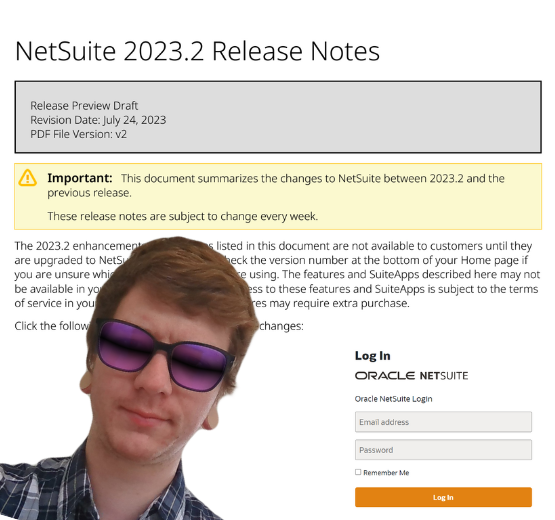Retail businesses – and distribution-based businesses in general – can be tricky beasts to tame. There are multiple moving parts to keep an eye on, sometimes quite literally. Balancing stock, retaining staff, optimising logistics, and achieving sustainability goals all require careful management and often the goal posts are moving.
On the whole, the UK retail sector is not doing too badly but the story is different every month. Nevertheless, there are a handful of challenges that retailers and wholesale distribution (WD) businesses face day-to-day, whatever the landscape, that can all be mitigated with a cloud ERP solution such as Oracle NetSuite.
Stock management and visibility
All retailers and warehouse distribution companies share one core challenge: achieving total stock visibility.
Keeping a close eye on stock levels can be difficult enough, especially when you’re dealing with stock across multiple premises. Some companies struggle to effectively keep an eye on stock movement. Others battle with their systems over stock allocation and priority – leaving unfulfilled orders dying on the vine whilst new, faster moving lines get out the door quickly. Plus, there’s reportedly a “ticking time bomb” of excess stock at retailers around the UK.

The solution to best practice stock management and visibility
NetSuite’s Warehouse Management System is an unparalleled resource for any business that revolves around distributing items from a warehouse. It’s an optional add-on to the core NetSuite service, designed to holistically optimise day-to-day warehousing operations – from picking and packing, all the way to back-office stock management and analytics.
WMS puts power in the hands of warehouse staff. Your team can use the NetSuite warehouse smartphone app to directly interact with receiving, picking, and packing operations – keeping your stock records up to date in real time. This removes the hassle and errors associated with manual data entry and stock adjustments.
Also included is a feature called Smart Count which allows stock taking to happen without entirely shutting down warehouse operations. And NetSuite’s native inventory management capabilities allow warehouse and purchasing managers to monitor stock levels in real time and optimise purchasing in line with data-led supply and demand.
But WMS doesn’t just remove headaches from stock activities. It can also increase warehouse productivity by applying practical picking strategies; for example, using efficient and opportunistic pick paths to pick multiple orders at a time. WMS and mobile scanning functionality can even help you avoid inaccuracies and mispicks, as well as optimising your warehouse space to minimise redundancy.
Inflation and the cost of living crisis
This is an issue that hits retailers and distributors from both sides. Potential customers have less left in their wallets at the end of each month, resulting in high price sensitivity and a strong need to justify any purchases. However, inflation is also increasing costs throughout the supply chain, which are being passed on further down the chain.

The solution to managing inflation and the cost of living crisis
ERP solutions like NetSuite help you establish and maintain a total birds’ eye view of all business operations. This lets you interrogate all areas of your business in order to streamline operations and increase margins where possible.
Let’s approach the issue of rising supply chain costs first. NetSuite’s Supply Chain Management functionality (available through various add-on modules) helps you oversee the flow of goods within your supply chain. It also allows you to regularly audit suppliers to ensure they are still a good fit for you in terms of cost, sustainability, and risk.
To approach the issue of attracting and retaining customers, NetSuite also provides optional Pricing Management add-ons that help you to control your pricing, “sense check” your pricing strategy, and create offers to move slow-moving items.
This granular insight can help you to maximise pricing and cost efficiencies, and ensure that your products represent good value for money. Which leads us on to…
Customer generation, experience and retention
Nowadays, retail can seem like a pretty crowded market. New retail establishments are popping up every day, especially online, yet your audience’s attention is still finite. All retailers have to compete with well-known, larger retailers with well-oiled sales processes – often honed over decades.
The challenge here is to break through the noise of the retail market, win new business, and earn brand loyalty when your average buyer is now more distracted than ever.

Inside our customer RIXO‘s flagship store on the King’s Road in London.
The solution to successful customer generation, experience and retention
There are numerous ways that ERPs at large – particularly NetSuite – can help address this issue.
Let’s start at the top of the sales and marketing funnel. NetSuite includes a fully featured marketing suite, complete with lead capture and generation tools, a robust CRM, and campaign and email marketing tools functions to create irresistible, fully customised marketing campaigns. Additionally, its optional Pricing Management add-ons can help you create personalised offers that reward loyal, high-value customers.
As soon-to-be customers make their way through the buying stages, NetSuite’s Intelligent Recommendations feature uses AI to recommend related items, either through your SuiteCommerce website or to salespeople when speaking with or emailing customers. Additionally, NetSuite’s CRM functionality and broad visibility also helps your team provide an efficient frictionless service to each customer.
Nearly half (48%) of retailers believe that frequently out-of-stock items are their biggest challenge in serving customers nowadays. Thankfully, NetSuite’s inventory management capabilities allow you to effectively plan and predict stock demand – helping minimise out-of-stock items or excess stock. NetSuite also includes Returns Management functionality as standard too, so your teams can manage returns effectively.
Employee experience and retention
Compared to other types of business, retail and warehousing have long suffered from notoriously high staff turnover rates. Customer-facing staff often suffer stress relating to dealing with the public and voice concerns over inflexibility of hours and rotas. On the other hand, warehouse staff are more likely to suffer physical injuries and feel pressure from unsustainable productivity demands.

The solution to a better employee experience and retention
Better use of technology can improve employee retention and satisfaction across all teams, not just customer services and warehouse staff.
In terms of customer-facing staff, having access to an efficient, data-rich CRM like NetSuite’s lets your team assist customers in a quick and fuss-free manner, potentially avoiding customer annoyance and 1-star reviews! Also consider NetSuite’s capability for automated order fulfilment messaging, which may avoid many instances of customer queries and calls in the first place.
Warehousing staff will likely benefit from much of the optimisation functionality that the WMS add-on provides – helping them “work smarter, not harder”. WMS can help your teams apply effective picking strategies (such as wave picking and allocated zones); provides the option to separate picking and packing functionality; and allows staff to carry out many core warehousing tasks through a simple, mobile app – saving on the confusion and errors inherent in paper-based systems. All of which results in higher customer satisfaction down the line.
This is also a good opportunity to mention the SuitePeople add-on. This all-round HR platform supports team leaders and HR teams with performance management and HCM analytics; but also serves the whole organisation with seamless, secure access to HR functions through NetSuite, such as requesting time off and accessing rotas.
Organisation-wide functionality and data visibility
Any company that involves warehouse distribution undoubtedly has a lot of moving parts. But when each department uses multiple, different software systems just to do their day-to-day jobs, it can be hard to get a true birds’ eye view of how things really are.
But business analytics isn’t the only issue here. Operational teams also suffer when they have to juggle multiple systems just to do simple, everyday actions.

The solution to gain organisation-wide functionality and data visibility
Both of these points are a great case for investing in an ERP. ERPs are specifically designed to unify business processes and act as a single, central “watering hole” for all departments and functions. When all of your teams are using the same system to do their jobs, they don’t have to rely on workarounds to link two systems’ functionality or join the dots with error-prone manual data entry. All of the business’s functionality and data is housed within the ERP.
This unification also benefits those who need to analyse any part of the business’s data. Rather than looking in myriad different places for the data they need, all data and activities flow through one platform. This makes it much easier to generate reports that give a true picture of the whole company, and to identify trends, correlations, and connections that would be nigh on impossible to find when analysing siloed data.
NetSuite’s best in class built-in SuiteAnalytics feature and its big brother add-on, the Analytics Warehouse, lets you and your teams generate visual, intuitive reports on the fly; drawing on data from across your NetSuite instance and consolidating data from other sources like Google Analytics, Salesforce, and imported data from legacy systems.
Sustainability
Buyers of all kinds are growing increasingly aware of, and sensitive to, ethical and environmental issues within their supply chains. This awareness is undoubtedly a good thing, but it can be challenging for suppliers and retailers to keep up with these demands and stay in their customers’ ESG good books.

An office with one of our customer Borg & Overström‘s sustainable water coolers
The solution to managing sustainability goals
NetSuite’s robust Supply Chain Management function is essential here. It can help you keep a watching brief over all of your suppliers, ensuring they stay in line with your corporate ethics, values, and green targets. In fact, it can help you potentially eliminate numerous ethical nasties from your supply chain, like carbon emissions, unfair labour practices, deforestation, water insufficiency, and more.
Using tools like NetSuite’s inventory management functions also helps you meet sustainability goals by minimising any potentially wasteful over-purchasing.
If you’re a business that distributes – retail, wholesale or a manufacturer – and you’re ready to wave goodbye to these challenges using NetSuite, book a call with the NetSuite experts here at BrightBridge today!
Keep reading

What is a NetSuite implementation partner? How do you choose one?

Technology fit for total customer service in 2024

Retail and wholesale distribution: how to improve supply chains

Ditching Sage 1000: what you need to know from businesses that have done it

6 ways AI-ready Microsoft Dynamics 365 helps chartered associations serve members

6 retail and wholesale distribution challenges and how NetSuite solves them

The most exciting features in Microsoft Dynamics 365 2023 Release Wave 2

How to manage a new NetSuite Release: one expert's update process

What’s in NetSuite Release 2023.2?
